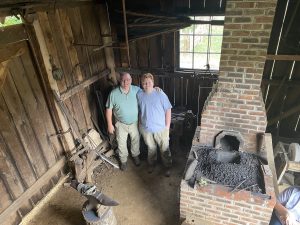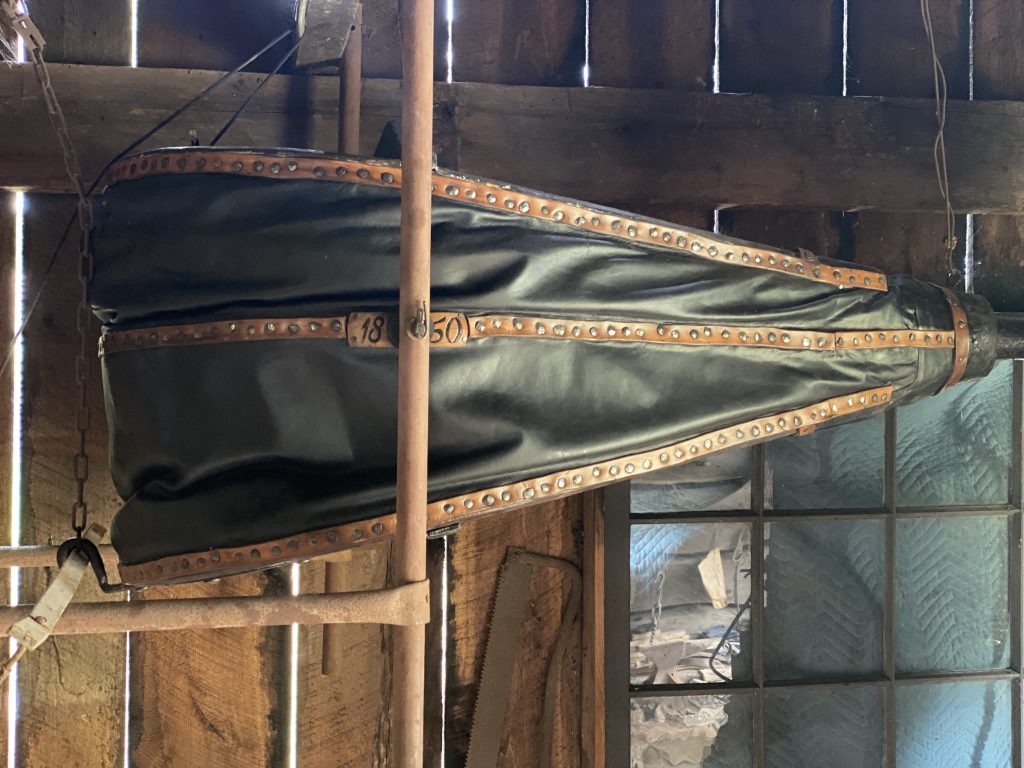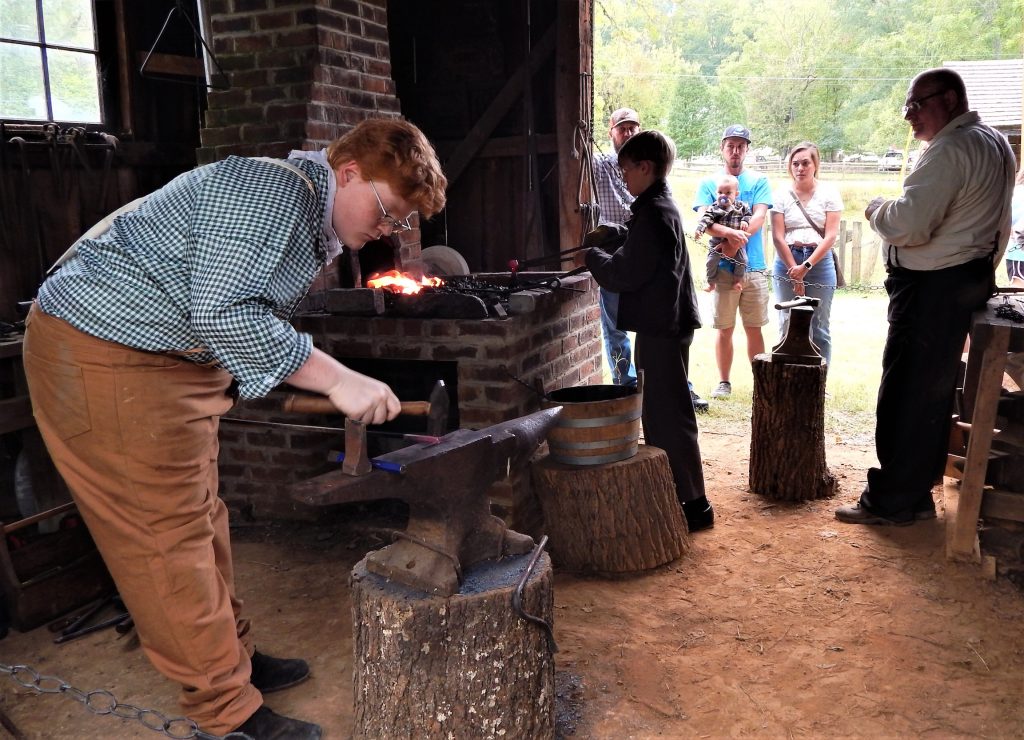
Longfellow was right to memorialize the blacksmith. An indispensable tradesperson in early America, the blacksmith provided goods and services that allowed people to build, travel, and eat. In the 21st century—when industrialization and automation has all but supplanted the need for hand-forged horseshoes, wagon tires, nails, and roasting spits—the blacksmith still holds allure. Like the children in Longfellow’s poem, we still “love to see the flaming forge/And hear the bellows roar.”
The forge at Exchange Place honors this legacy of craftsmanship, and visitors have long come to see the sparks fly from the anvil here. Though not in its original location (the Eden’s Ridge forge apparently stood about a half mile away), the building nevertheless seems perfectly situated. Like the “smithy” in Longfellow’s poem, the humble log forge sits under a spreading tree (tulip poplar, though, not chestnut) and faces the old Great Stage Road whose travelers no doubt relied on the services of its proprietor.
In the center of the building is an elevated brick hearth, where hot embers heat iron and steel. While this may be the heart of the forge, the lungs that power it are the bellows. With a pump of the hand, this ponderous, double-chambered apparatus fills with air that is then directed to the fire pot. Without properly functioning bellows, the forge is defunct—a fact known well to David and John Pace, who began volunteering at Exchange Place after John joined the Junior Apprentice program in 2022. The father-and-son duo, who have a modern forge at home, jumped at the chance to demonstrate in a historic setting, though they quickly discovered that the Exchange Place forge needed some TLC. After close examination of the bellows, they found several holes in the bladder as well as dry rot, missing hardware, and a large crack in one of the wooden paddles. So, they decided to take on the task of restoring the bellows as a summer project. Over several weeks, they dismantled, refurbished, and reconstructed the massive tool and recorded their journey through a video documentary that can be viewed at http://www.youtube.com/@JandDProjects0965.
According to a note the pair found attached to the underside of one of the paddles, the bellows date to 1850 and were refurbished once by an Exchange Place volunteer about 25 years ago. David and John were determined to make this restoration even more accurate. Before embarking on the task, they researched antique bellows and even traveled to Williamsburg to study the bellows at Anderson Forge.
One of their major goals was to replace many of the modern elements with more period appropriate materials, switching synthetic naugahyde for real cow leather and upholstery tacks for hand-forged tacks. John, who is quite the purist, insisted that he and David make all the new tacks themselves, a task that gave them a greater appreciation for the often tedious and monotonous work of early blacksmiths. All in all, they made 460 tacks—a number calculated from the spacing of the bellows at Williamsburg.
As with many restoration projects, challenges arose along the way, and compromises had to be made. Some of the original rivets, for instance, had to be replaced with modern bolts because the holes had reamed out. To disguise the bolts, David and John ground off the lettering and then hammered and blackened the heads to make them look hand-forged. David notes about their approach, “We continually walked the narrow line between traditional materials and methods versus the modern ones. All historical sacrifices made in this restoration came with much debate and principled consideration.”
Along with the challenges also came surprises, including strands of hair that were found clinging to a snag in the wooden paddles. Whether the hair belonged to an animal or human, and if human, what race or gender, is yet to be known, but the discovery adds yet another element to the history of these grand old bellows, which were crafted over a century and a half ago, and thanks to David and John Pace, are still going strong.


The mission of Exchange Place Living History Farm is to preserve and interpret the heritage of mid-19th century farm life in Northeast Tennessee. A private, non-profit organization, Exchange Place is maintained and operated primarily by volunteers and is supported by donations, fundraisers, memberships, and grants.

Exchange Place
4812 Orebank Rd,
Kingsport, TN 37664
423-288-6071